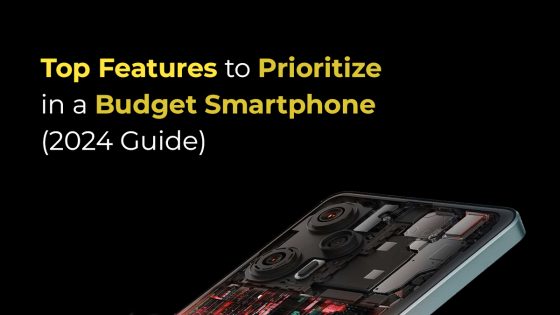Top Features to Prioritize in a Budget Smartphone (2024 Guide)،
In a rapidly developing country like India, the usage of smartphones is increasing at a rapid pace. Previously, the term ‘Smartphone’ was associated with something expensive, making it accessible only to the middle or high-income groups. However, this is no longer the case. One of the most popular and competitive segments in the market is the sub-10k price category, which offers devices with decent specifications without straining your budget. These affordable smartphones are now easily accessible even in rural areas, remote locations, and small towns.
While these devices fulfill the dream of owning a smartphone for many Indians, they come with advantages and disadvantages. In this article, we will suggest things that you should emphasize while selecting a budget smartphone. We have carefully selected 18 of the best entry-level devices currently available to provide meaningful insights.
1. Display
Entry-level smartphones are equipped with decent-sized display panels nowadays. The display size varies between 6.5 inches and 6.8 inches for all existing budget devices. The resolution is 720×1600 pixels and the refresh rate is either 90Hz or 60Hz. The display on under 10k smartphones is mostly a Liquid Crystal Display aka IPS LCD panel offering decent quality visuals during content consumption. There is a noticeable difference between LCD and AMOLED visuals but there are no existing brands that offer AMOLED at this price point. The main reason behind this can be the higher cost of AMOLED panels. If you are a casual user who loves to watch videos and reels, an LCD with a 90Hz refresh rate will suffice but don’t expect anything more from these panels. Even peak brightness is low (mostly around 500 nits) which makes screen legibility poor in outdoor conditions.
Best Display phones under Rs 10,000
| Smartphone | Display & Resolution | Refresh rate | Peak Brightness (nits) |
| Poco M6 5G | 6.74-inch, LCD, 720×1650 pixels | 90Hz | 600 |
| Poco C51 | 6.52-inch, LCD, 720×1600 pixels | 60Hz | 400 |
| Samsung Galaxy F14 | 6.6-inch LCD, 2408×1080 pixels | 90Hz | 480 |
| Moto G24 Power | 6.6-inch LCD, 720×1612 pixels | 90Hz | 537 |
| Realme C53 | 6.74-inch LCD, 1080×2400 pixels | 90Hz | 560 |
| Realme Narzo N55 | 6.72-inch LCD, 1080×2400 pixels | 90Hz | 680 |
| Itel P55 Plus | 6.6-inch LCD, 720×1640 pixels | 90Hz | 500 |
| Xiaomi Redmi 13C | 6.74-inch LCD, 720×1600 pixels | 90Hz | 600 |
| Infinix Hot 40i | 6.6-inch LCD, 720×1612 pixels | 90Hz | 480 |
| Xiaomi Redmi 12 4G | 6.79-inch LCD, 1080×1460 pixels | 90Hz | 550 |
| Infinix Smart 8 HD | 6.6-inch LCD, 720×1612 pixels | 90Hz | 500 |
| Redmi A2 Plus | 6.52-inch LCD, 720x 1600 pixels | 90Hz | 400 |
| Oppo A18 | 6.56-inch LCD, 720×1612 pixels | 90Hz | 720 |
| Samsung Galaxy A05 | 6.7-inch LCD, 720×1600 pixels | 60Hz | 550 |
| Lava Blaze 2 5G | 6.5-inch LCD, 720×1600 pixels | 90Hz | 450 |
| Itel A70 | 6.6-inch LCD, 720×1612 pixels | 60Hz | 500 |
| Nokia C32 | 6.52-inch LCD, 720×1600 pixels | 60Hz | N/A |
| Lava Yuva 3 Pro | 6.5-inch LCD, 1600x 720 pixels | 90Hz | 600 |
2. Chipset & Storage
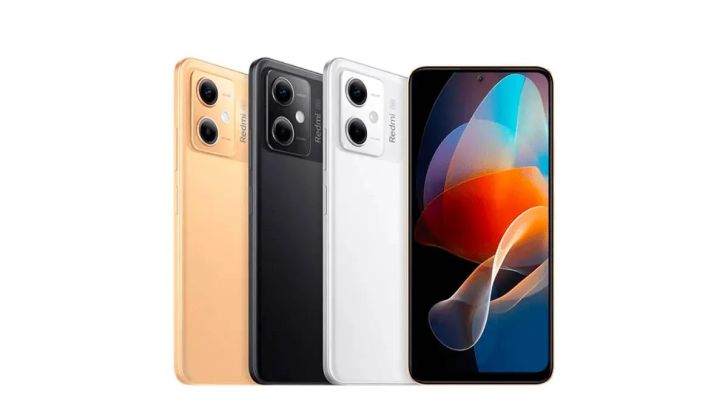
The chipset is one of the main factors deciding the performance of a smartphone. The kind of SoC a device features decides how fast and efficient it will be. The seamlessness of actions like multitasking, switching between apps, gaming, editing, and more depend on the processor than anything else. Most entry-level smartphones come with MediaTek Helio or Unisoc chipsets. Unisoc has also started equipping Tiger SoC in some of the devices. Very rarely do phones under 10k get a Dimensity chipset. The performance of Helio chipsets is slightly better than Unisoc chipsets as it offer faster and smoother operation, still, these budget chipsets do pose problems like hang-ups, lags, stutters, etc.
Entry-level smartphones come with 4GB or 6GB RAM and mostly 64GB/128GB storage. Some specific devices do have 8GB RAM or 256GB storage as well. 4GB RAM and 64GB storage proves to be insufficient during many tasks but those that feature 6GB RAM and 128GB storage are decent.
Phones with the best processing power under Rs 10,000
| Name of the Smartphone | Chipset/SoC | RAM+ Storage Models |
| Poco M6 5G | MediaTek Dimensity 6100 Plus | 4GB/128GB 6GB/128GB 8GB/256 |
| Poco C51 | MediaTek Helio G36 | 4GB/64GB 6GB/128GB |
| Samsung Galaxy F14 | Exynos 1330 | 4GB/128GB 6GB/128GB |
| Moto G24 Power | MediaTek Helio G85 | 4GB/128GB 8GB/128GB |
| Realme C53 | Unisoc Tiger T612 | 4GB/128GB 6GB/64GB 6GB/128GB |
| Realme Narzo N55 | MediaTek Helio G88 | 6GB/128GB 4GB/64GB |
| Itel P55 Plus | Unisoc T606 | 8GB/256GB |
| Xiaomi Redmi 13C | MediaTek Dimensity 6100 Plus | 4GB/128GB 6GB/128GB 8GB/256GB |
| Infinix Hot 40i | Unisoc T606 | 8GB/256GB |
| Xiaomi Redmi 12 4G | MediaTek Helio G88 | 4GB/128GB 6GB/128GB |
| Infinix Smart 8 HD | Unisoc T606 | 3GB/64GB |
| Redmi A2 Plus | MediaTek Helio G36 | 4GB/64GB 4GB/128GB 2GB/32GB |
| Oppo A18 | MediaTek Helio G85 | 4GB/64GB 4GB/128GB |
| Samsung Galaxy A05 | MediaTek Helio G85 | 4GB/64GB 6GB/128GB |
| Lava Blaze 2 5G | MediaTek Dimensity 6020 | 4GB/64GB 6GB/128GB |
| Itel A70 | Unisoc T603 | 4GB/64GB 4GB/128GB 4GB/256GB |
| Nokia C32 | Unisoc SC9863A | 4GB/64GB 4GB/128GB 6GB/128GB |
| Lava Yuva 3 Pro | Unisoc T616 | 8GB/128GB |
3. Software
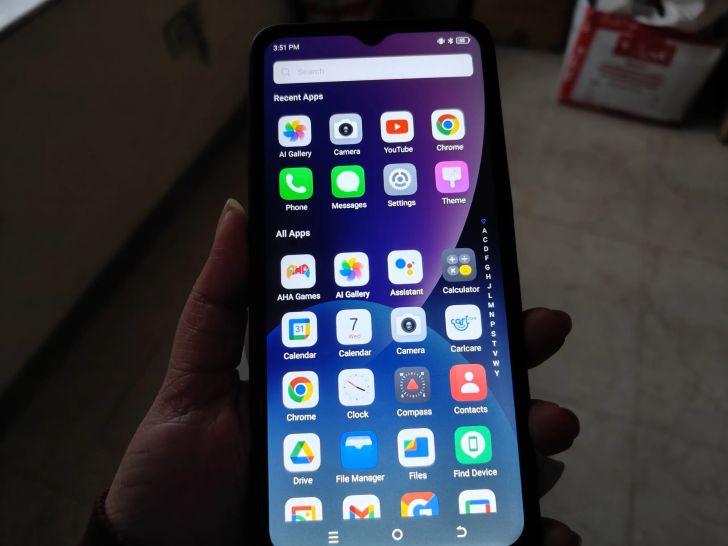
While mid-range, premium, and flagship smartphones are launched with the latest Android Operating System, entry-level smartphones sometimes arrive with older versions of Android. This means, buying phones under 10k would not offer all the latest UI features that have been made available. However, there is always a promise of a minimum of 2 years of software and 3 years of security updates, but those who want the latest personalization and customization options will find this a tad bit annoying. The list below clarifies which ones came with Android 13 and which had Android 14 pre-installed.
Best Android 14 and Android 13 phones under Rs 10,000
| Name of the Smartphone | Android 13 | Android 14 |
| Poco M6 5G | YES | |
| Poco C51 | YES | |
| Samsung Galaxy F14 | YES | |
| Moto G24 Power | YES | |
| Realme C53 | YES | |
| Realme Narzo N55 | YES | |
| Itel P55 Plus | YES | |
| Xiaomi Redmi 13C | YES | |
| Infinix Hot 40i | YES | |
| Xiaomi Redmi 12 4G | YES | |
| Infinix Smart 8 HD | YES | |
| Redmi A2 Plus | YES | |
| Oppo A18 | YES | |
| Samsung Galaxy A05 | YES | |
| Lava Blaze 2 5G | YES | |
| Itel A70 | YES | |
| Nokia C32 | YES | |
| Lava Yuva 3 Pro | YES |
4. Design
Design is very subjective. Leading brands like Realme, Xiaomi, Oppo, Itel, Lava and more try to offer a solid build quality and a design that looks attractive so that users whose focus is design might like their product. While some users might want colorful and stylish phones, others might want a mature and minimalistic look. Motorola keeps its design very simple and color variants very mature while Redmi, Realme, Samsung, and Infinix play with colors and launch devices in a host of shades.
As for build quality, most of these devices weigh between 180 to 200 grams and have a thickness of 8.5mm or more.
Design is often one of the strongest suits of an entry-level device as sometimes looking at a device will not make anyone feel that it costs under 10k. There might be slow charging, an underwhelming camera or laggy performance, but there is seldom a bad design. The rear panel might be a smudge magnet but otherwise, these devices look decent. Here are the images of the rear panel of some entry-level smartphones we have talked about.
5. Camera
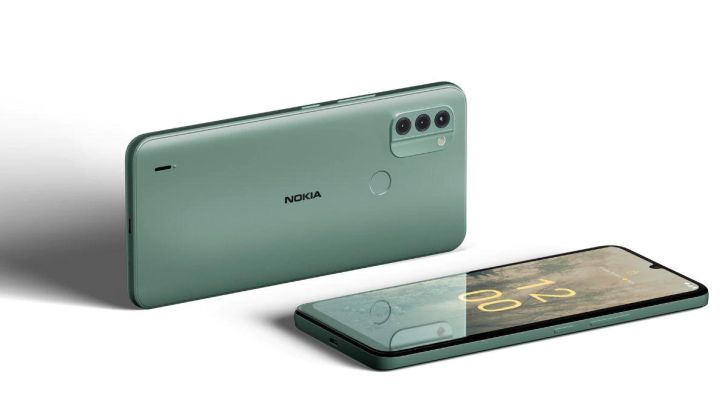
In today’s digital age, the significance of cameras cannot be overstated, particularly in the realm of social media. They enable users to capture precious moments and establish their online presence on popular platforms such as Facebook, Instagram, Twitter, and Snapchat. However, when it comes to entry-level smartphones, the camera setup typically consists of either a single or dual sensor at the back. While these cameras may suffice for casual users, they often fall short for individuals who prioritize photography and videography. These sensors lack the advanced features found in professional-level cameras, rendering them rather average in performance. While most smartphones priced under 10,000 offer a 50MP main camera, some brands go beyond with 64MP and 13MP sensors.
As for the selfie camera, these smartphones usually come equipped with a 5MP or 8MP sensor, allowing users to engage in video calls and capture solo or group selfies to share on their social media profiles. However, these cameras often lack autofocus and tend to excessively blur the background, placing the focus solely on the person in the frame.
Whether it’s the rear or front camera on entry-level smartphones, the quality of photos is compromised, particularly in low-light environments. The colors appear artificially enhanced, giving the shots an unnatural look. Additionally, there is often blurring around the edges, and pictures taken in zoom mode tend to be noisy. Furthermore, the level of detailing is limited. Rear and Front Cameras in entry-level smartphones.
Best Camera Phones Under Rs 10,000
| Name of the Smartphone | Rear Camera | Front Camera |
| Poco M6 5G | 50MP+0.08MP | 5MP |
| Poco C51 | 8MP+0.08MP | 5MP |
| Samsung Galaxy F14 | 50MP+2MP | 13MP |
| Moto G24 Power | 50MP+2MP | 16MP |
| Realme C53 | 108MP+2MP | 8MP |
| Realme Narzo N55 | 64MP+2MP | 8MP |
| Itel P55 Plus | 50MP | 8MP |
| Xiaomi Redmi 13C | 50MP+2MP+0.08MP | 8MP |
| Infinix Hot 40i | 50MP+0.08MP | 32MP |
| Xiaomi Redmi 12 4G | 50MP+8MP+2MP | 8MP |
| Infinix Smart 8 HD | 13MP+0.08MP | 8MP |
| Redmi A2 Plus | 8MP+0.08MP | 5MP |
| Oppo A18 | 8MP+2MP | 5MP |
| Samsung Galaxy A05 | 50MP+2MP | 8MP |
| Lava Blaze 2 5G | 50MP+0.08MP | 8MP |
| Itel A70 | 13MP+ 0.08MP | 8MP |
| Nokia C32 | 50MP+2MP | 8MP |
| Lava Yuva 3 Pro | 50MP+ AI secondary cam | 8MP |
6. Battery & Charging
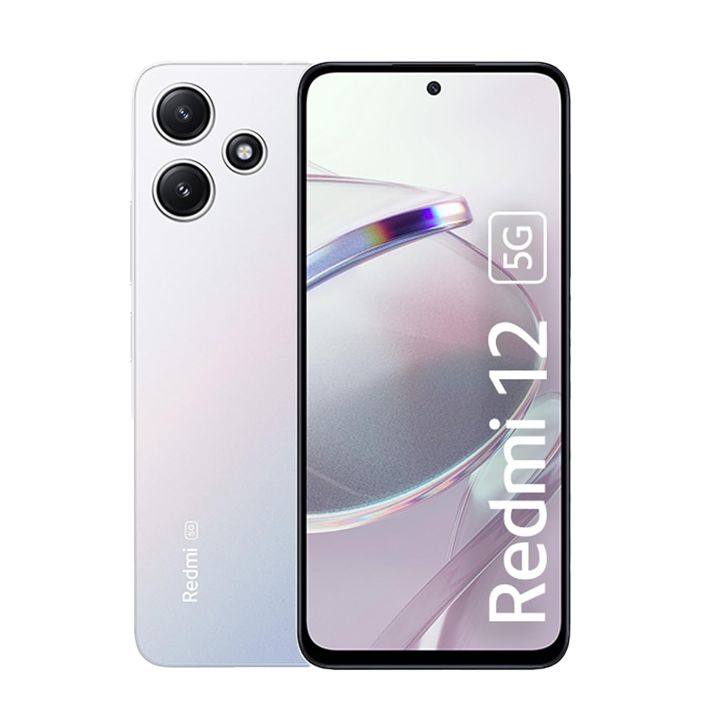
Battery is one of the strongest features of devices under 10,000 INR. Even if the device costs Rs. 6999, it packs a massive 5000mAh battery under the hood. A 5000mAh battery easily lasts all day when the usage is light to moderate. This kind of usage includes browsing social media, calling, texting, watching videos, listening to music, making notes, light gaming, and more. Powerful battery makes these entry-level smartphones suitable for those who need an efficient device that lasts 8-10 working hours so that they have to recharge it once at night. Samsung phones under 10k come with an even larger 6000mAh battery.
Let’s talk about charging speeds now. The charging capability of most of these devices is 10W or 18W. However, some specific devices come with 25W, 33W, and 45W wired charging speeds as well. A 10W charger takes around 3 hours to charge a 5000mAh battery while an 18W charger charges it in 2 hours 20 minutes. A 25W charger can charge the battery in around an hour while a 33W charger can charge the power house in 45-50 minutes. Recently Itel launched P55 Plus which is the first in the segment offering 45W charging in under 10k segment. A 45W charger can charge a 5000mAh battery in 30 minutes.
Best Big Battery and Fast Charging Phones under Rs 10,000
| Name of the Smartphone | Battery Size | Charging Speed |
| Poco M6 5G | 5000mAh | 18W |
| Poco C51 | 5000mAh | 10W |
| Samsung Galaxy F14 | 6000mAh | 25W |
| Moto G24 Power | 6000mAh | 30W |
| Realme C53 | 5000mAh | 18W |
| Realme Narzo N55 | 5000mAh | 33W |
| Itel P55 Plus | 5000mAh | 45W |
| Xiaomi Redmi 13C | 5000mAh | 18W |
| Infinix Hot 40i | 5000mAh | 18W |
| Xiaomi Redmi 12 4G | 5000mAh | 18W |
| Infinix Smart 8 HD | 5000mAh | 10W |
| Redmi A2 Plus | 5000mAh | 10W |
| Oppo A18 | 5000mAh | 20W |
| Samsung Galaxy A05 | 5000mAh | 25W |
| Lava Blaze 2 5G | 5000mAh | 18W |
| Itel A70 | 50000mAh | 10W |
| Nokia C32 | 5000mAh | 18W |
| Lava Yuva 3 Pro | 5000mAh | 18W |
Bottomline
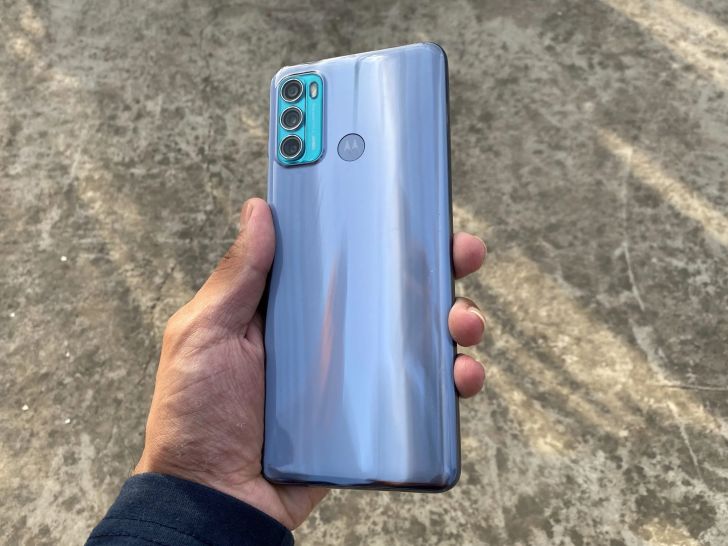
Entry-level smartphones start at a price of under 10,000 INR for their base model. Higher RAM+ Storage models might cost more than 10k, but there is always an option to get your device within 10,000 rupees.
Best Smartphones under Rs 10,000
| Smartphone | Starting price |
| Poco M6 5G | Rs. 9499 |
| Poco C51 | Rs. 5999 |
| Samsung Galaxy F14 | Rs. 9990 |
| Moto G24 Power | Rs. 8999 |
| Realme C53 | Rs. 8880 |
| Realme Narzo N55 | Rs.8999 |
| Itel P55 Plus | Rs. 9999 |
| Xiaomi Redmi 13C | Rs. 7999 |
| Infinix Hot 40i | Rs. 9999 |
| Xiaomi Redmi 12 4G | Rs. 9499 |
| Infinix Smart 8 HD | Rs. 6399 |
| Redmi A2 Plus | Rs. 7499 |
| Oppo A18 | Rs. 9999 |
| Samsung Galaxy A05 | Rs. 9900 |
| Lava Blaze 2 5G | Rs. 9999 |
| Itel A70 | Rs. 7299 |
| Nokia C32 | Rs. 6999 |
| Lava Yuva 3 Pro | Rs. 8999 |
You can follow Smartprix on Twitter, Facebook, Instagram, and Google News. Visit smartprix.com for the most recent news, reviews, and tech guides.


